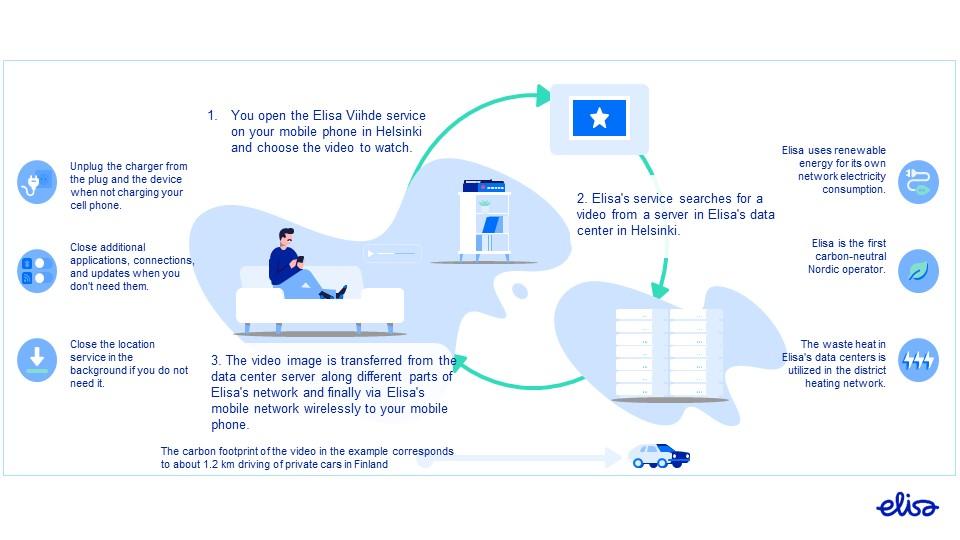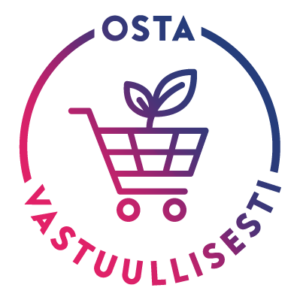Elisa – Reducing the electricity consumption together
The digital environment and increasing amount of data create significant social and economic opportunities for society. As information also has a carbon footprint, sustainable data management and consumer choices are important.

Very interesting data as the world goes digital. Raising awareness on the digital carbon footprint and how to mitigate it, becomes ever so important, as consumer choice is increasingly influenced by what’s good for the planet too.
Information also has a carbon footprint and therefore sustainable data management and consumer choices matter. We have improved the energy efficiency of our mobile network by 65% since 2016, measured by the energy consumption of the data transferred. We help our customers to help reduce carbon emissions by providing services that enable acting effectively and environmentally friendly.
Purpose
Our Elisa video service example is used for stakeholder dialogue as well as increasing awareness of the CO2 -footprint for Elisa’s digital services. We also talk about Elisa’s own measures, such as the use of renewable energy, utilization of waste heat in computer rooms, and services Elisa provides to its customers, such as virtual conference services and more energy-efficient 5G technology. Call to action is promoted by providing concrete hints to service users.
Results
Based on our calculations, we estimated that the carbon footprint (gCO2 eqv) for watching an hour-long video on Elisa Viihde corresponds to driving a passenger car approximately 1.2 kilometers in Finland. Thanks to Elisa’s own energy measures, the carbon footprint of this video example is neutral when watched with an Elisa subscription. Customer can mitigate own emissions with the help of the hints we gave as part of this case example.
Implementation
A rental movie offered by Elisa Entertainment was selected for this case example. The video image is transferred in bits from Elisa’s server to the user’s smartphone via Elisa’s network structures and requires electricity for this purpose. Understanding the size of data for one hour-long video and Elisa internal data for energy consumption in different parts of the network used for transferring data is essential.
We calculated and estimated electricity consumption in different parts of the network and converted electricity consumption into a carbon footprint by using Statistics Finland’s average CO2 emission factor for electricity production in Finland (Tilastokeskuksen keskimääräinen sähköntuotannon CO2-päästökerroin). We compared the emissions to the statistics of the Finnish Transport and Communications Agency Traficom Liikennefakta.fi website on the average CO2 emissions of the private car in traffic use. We published a related blog for increasing awareness and stakeholder dialogue.
Elisa Viihde video watching blog























































The People's Voice